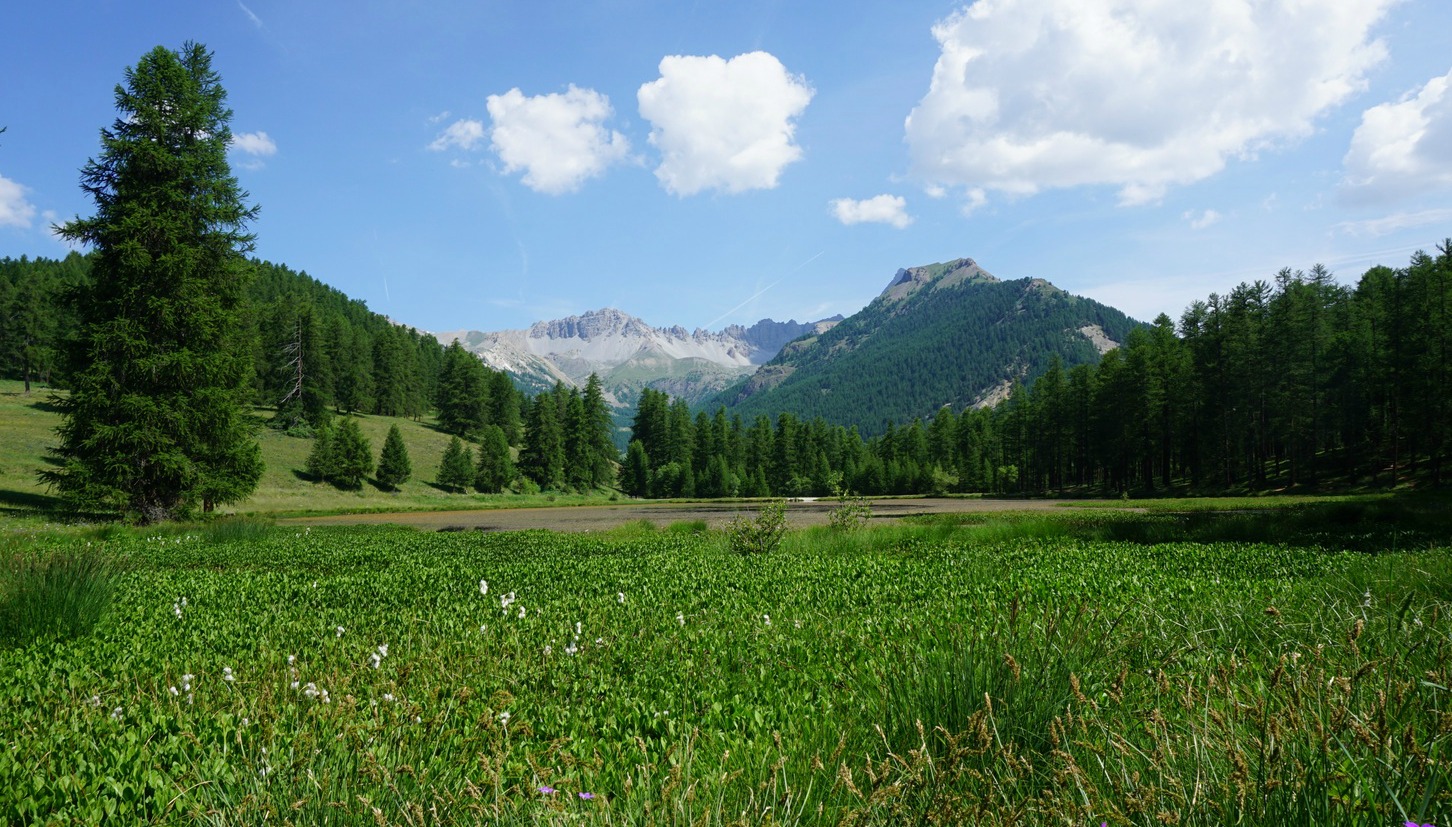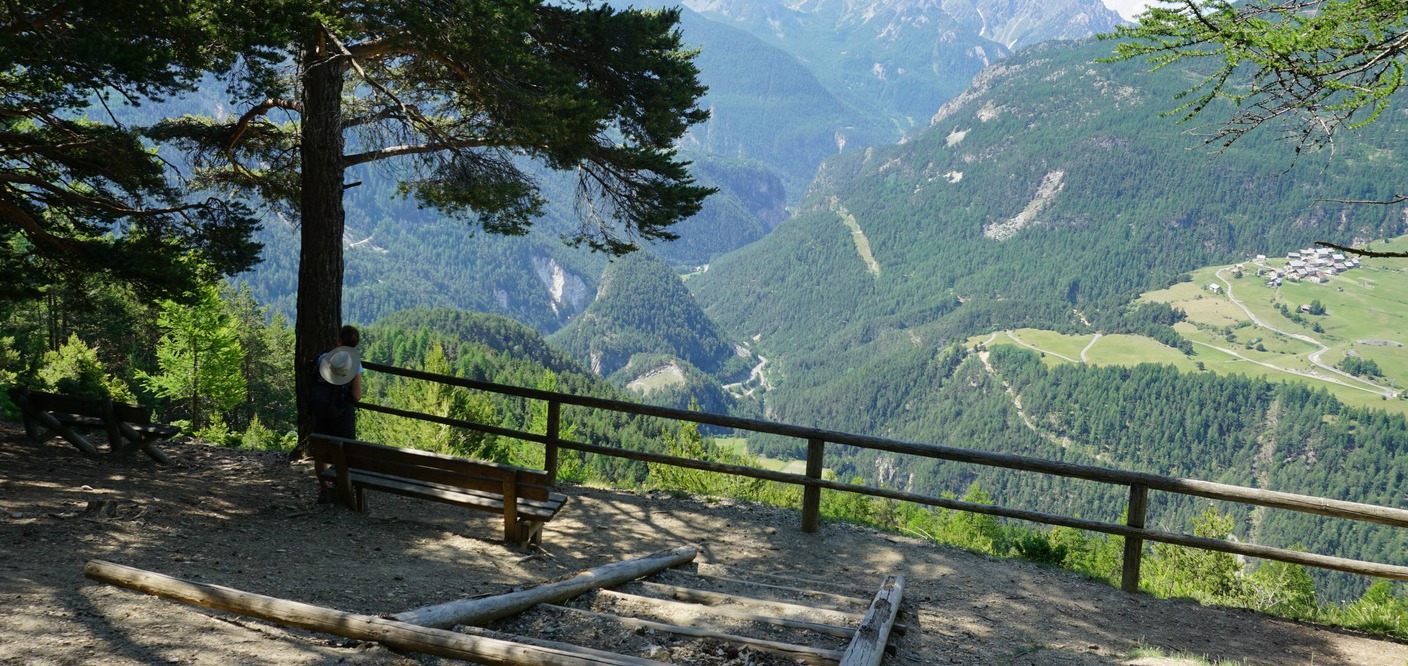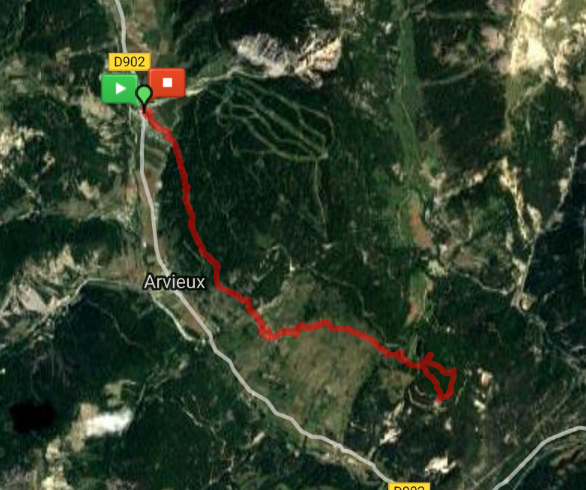Queyras: GR5 from La Chalp to Lac de Roue

After yesterday’s more demanding loop trail, we just wanted an easy walk to stretch our legs. But we also wanted a nice trail and some great views. The walk from La Chalp Arvieux to the Lac de Roue and the two viewing points nearby ticked all the boxes.
We started the walk straight from our hotel by the D902 road in La Chalp (1685 m). Incidentally, the mythic long-distance trail GR 5 ran right behind La Ferme de l’Izoard, our lodging. We followed the signposts and after a few hundred meters forked left in the woods where the trail proper started to ascend, heading south. We passed the village of Arvieux below us, and came to a hamlet called Les Maisons. We followed the white and red GR signs, and ascended a bit more, now along an open verdant hillside.
A little before Lac de Roue (1847 m), the GR itinerary followed a dirt track. A beautiful larch forest surrounded the lake, and there were picnic tables installed. We continued a bit, heading south in the woods to the viewing points, signposted as Belvédères, and also marked in the IGN map. We reached them after a brief ascent and descent, and had some nice views down to the Guil River Valley. Even Château-Queyras was visible.
We returned to the lake for our picnic, and took the same trail back to our hotel. In spite of the modest elevation differences, there were several ascents and descents, and our log showed 435 m elevation gain at the end of the hike.
Distance: 11 km
Walking time: about 4 h
Map: IGN 3537 ET Guillestre







































0 comments:
Note: only a member of this blog may post a comment.